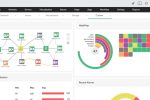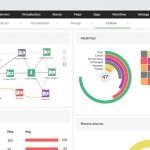By.Daniel Kwong, Field Chief Information Security Officer (CISO) for South East Asia and the Hong Kong region, Fortinet
With networks more complex and distributed, threat detection and response are more difficult than ever. As a result, organisations are deploying more and more security solutions across their networks, However, this exacerbates security sprawl, which raises complexity, fragments visibility and limits incident response. is untenable as it entrenches silos and hinders centralised management.
Consolidation is Key
According to Kearney, more than 25 percent of organisations in Southeast Asia have more than 10 cybersecurity vendors, while 36 percent say they deploy more than 10 cybersecurity solutions. The large number of security products in organisations increases complexity, integration costs and staffing requirements.
According to Deloitte, effective management of cyber risks could raise Asia Pacific’s collective GDP by USD145 billion in the long term. However, with security sprawl and the skills gap, regional organisations are at risk of seeing their cyber resilience take a beating. In 2021, Asia was most targeted by threat actors and recorded 25 percent of attacks globally, with the massive 1.42 million skills deficit being cited as a major contributing factor.
With the rapid extension of the digital attack surface, organisations are finding it increasingly difficult to protect against advanced threats. An assortment of point security products creates silos and aggravate the disconnect between IT and SecOps, raising the risk of cyber events and breach. IT and security professionals are facing challenges in managing assets, visibility and integrating multiple security vendors.
A cohesive and reliable solution with clear visibility and consistent control, will then be, nigh on impossible. Simply put, if tools are not designed to natively work together, IT teams are forced into bolting together solutions through complicated workarounds. The troubleshooting required for maintenance, and this means that such workarounds consume a considerable amount of IT overhead and risk logistical efficiency.
Integration is Imperative
In a survey done earlier this year, we found that more than 80 percent of organisations are either actively planning to work with cybersecurity vendors for a consolidation strategy or are looking forward to doing so in the not too distant future.
Providing improved integration and consolidating security reduces functional gaps, enabling organisations to reap considerable savings and efficiencies around costs and resource allocations. In turn, this frees up organisations to shore up their cyber resilience.
Realising Real Comprehensive Integration
However, organisations need to be able to integrate different security products and modules, by coupling to each other through standardised interfaces that is combined with unique framework design.
To address security sprawl, organisations should prioritise solutions that allow increased visibility into the threat landscape by enabling a coordinated and automated response to detected threats. Standardised threat intelligence and response across the digital architecture allows insights from security tools to be quickly leveraged for coordinated, actionable and systemic threat detection and incident response.
Adopting broad, integrated, and automated platforms are vital to achieving interoperability across a vast ecosystem of network environments and third-party solutions, providing centralised management and visibility and end-to-end automation by adapting to changing network environments. As a result, CISOs and security teams are able to better protect themselves against today’s sophisticated cyber threat landscape.




















